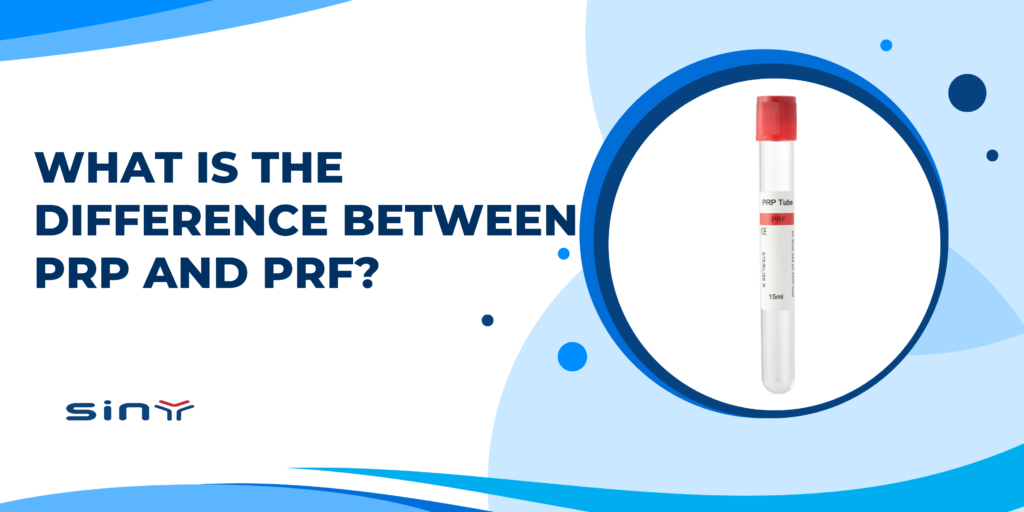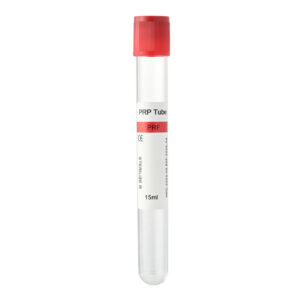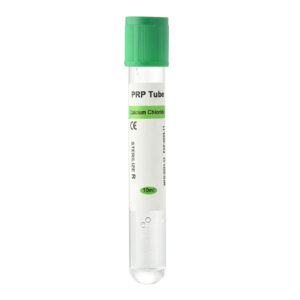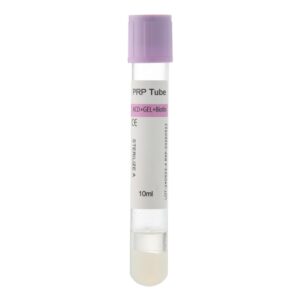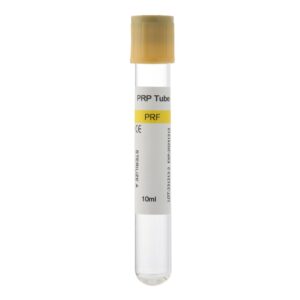What Is the Difference Between PRP and PRF? In the rapidly evolving field of regenerative medicine, clinicians and medical distributors are constantly seeking innovative, effective, and biologically compatible treatment options. Among the most prominent are autologous platelet concentrates, which harness the body’s own healing mechanisms to rejuvenate tissue, stimulate hair growth, and accelerate recovery.
Two leading technologies in this category are Platelet-Rich Plasma (PRP) and Platelet-Rich Fibrin (PRF). Although these therapies are often mentioned together, they differ significantly in preparation, biological behavior, and clinical outcomes. For healthcare providers and distributors, understanding the difference between PRP and PRF is essential for making informed treatment and product procurement decisions.
Preparation Protocols and Final Composition: PRP vs. PRF
The fundamental distinction between PRP and PRF begins with how each is prepared. The centrifugation process and the quality of the collection tubes are critical to the purity and effectiveness of the final product.
PRP (Platelet-Rich Plasma) preparation typically involves drawing the patient’s blood into tubes containing an anticoagulant, such as sodium citrate, to prevent clotting. The blood is then centrifuged at a high speed, often through one or two spin cycles, to separate it into distinct layers:
- Red blood cells are at the bottom
- Platelet-poor plasma (PPP) at the top
- A thin buffy coat layer in between, rich in platelets and leukocytes
The resulting PRP is a liquid concentration of platelets, usually 2–5 times higher than in whole blood, suspended in plasma and ready for immediate injection.
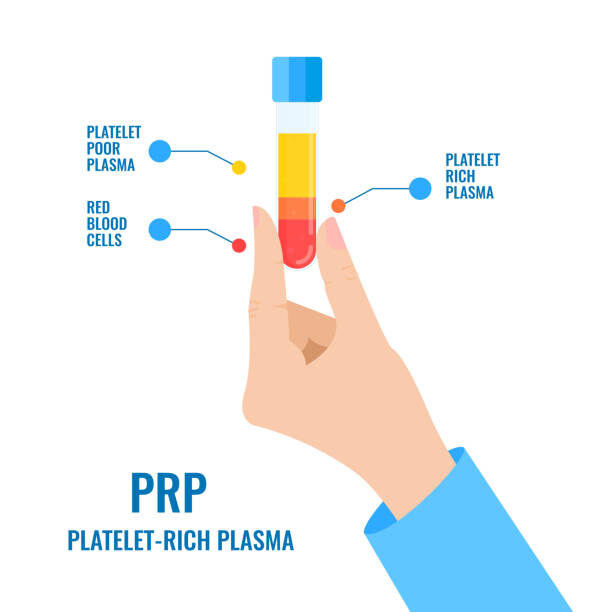
By contrast, PRF (Platelet-Rich Fibrin) represents a newer generation of platelet concentrate. It is prepared without anticoagulants and centrifuged at a lower speed. This slower spin allows blood components to separate more gently, forming a fibrin-rich matrix that naturally traps platelets, leukocytes, stem cells, and growth factors.
During this process, natural coagulation occurs inside the tube, creating a soft fibrin clot that serves as a three-dimensional biological scaffold. The material and surface quality of the PRF tube are therefore essential to support proper fibrin formation and consistent results.
Growth Factor Release in PRP and PRF
The way PRP and PRF deliver growth factors to tissue is markedly different.
PRP, being a fluid, provides a rapid release of growth factors immediately after injection. This quick, intense release initiates a strong inflammatory and healing response—ideal for cases where an immediate stimulation of repair is needed. However, because the growth factors disperse quickly, the effect diminishes within a few hours.
PRF, on the other hand, releases growth factors slowly and continuously over 7–10 days. The fibrin matrix acts as a natural reservoir, gradually releasing bioactive molecules into the surrounding tissue. This extended-release mechanism promotes sustained healing, collagen production, and tissue remodeling.
Additionally, the presence of leukocytes in PRF helps regulate inflammation and enhance immune-mediated tissue repair. In practical terms, PRP behaves like an immediate-release formulation, while PRF acts as a sustained-release system—a critical distinction when selecting the right therapy for your patient.
When to Choose PRP or PRF
The decision to use PRP or PRF depends on the clinical goal, the treatment area, and the desired biological response.
Platelet-Rich Plasma (PRP) is commonly preferred for:
- Hair Restoration: PRP’s concentrated platelets stimulate dormant follicles and enhance hair density.
- Superficial Skin Rejuvenation: When combined with microneedling or dermal rollers, PRP accelerates collagen synthesis and improves tone and texture.
- Orthopedics & Sports Medicine: PRP is used to treat tendon injuries, ligament sprains, and early arthritis by modulating inflammation and promoting repair.
Platelet-Rich Fibrin (PRF) is often superior for:
- Volume Loss & Deep Wrinkles: The fibrin matrix provides subtle volume and continuous collagen stimulation, ideal for under-eye hollows and nasolabial folds.
- Advanced Skin Rejuvenation: PRF is particularly effective for acne scars, deeper wrinkles, and long-term skin remodeling.
- Dental & Oral Surgery: PRF is widely used in implantology, bone grafting, and sinus lift procedures, where its fibrin scaffold supports bone and soft tissue regeneration.
The Critical Role of PRP and PRF Tubes in Clinical Success
The success of PRP and PRF therapies depends not only on the practitioner’s technique but also on the quality of the consumables—especially the blood collection tubes.
Inferior tubes can compromise results by causing poor platelet recovery, contamination, premature clotting, or low yield. Conversely, medical-grade PRP and PRF tubes ensure accurate separation, sterility, and consistent platelet concentration.
- High-quality PRP tubes contain the correct anticoagulant and a separator gel to ensure precise layer separation and optimal platelet yield.
- Premium PRF tubes, like those offered by Siny PRP, are made from biocompatible medical-grade materials that promote natural fibrin formation without additives.
Partnering with a reliable supplier ensures your products meet the highest safety and performance standards—protecting both your patients and your reputation. Explore Siny PRP’s professional-grade consumables for verified, reproducible clinical outcomes.
FAQs
1. Is PRF better than PRP?
Not universally. Each serves a different clinical purpose. PRF’s fibrin matrix supports long-term tissue regeneration, while PRP’s liquid form provides rapid, concentrated stimulation—making it ideal for quick-response treatments like hair or skin therapy.
2. What’s the key preparation difference between PRP and PRF?
PRP uses anticoagulants and high-speed centrifugation, while PRF relies on low-speed centrifugation without anticoagulants, allowing natural clot formation.
3. Do PRF tubes contain additives?
No. True PRF tubes are additive-free.
4. Can the same centrifuge be used for both PRP and PRF?
Yes, if it supports variable speed and time settings. PRP requires higher speeds; PRF requires lower speeds for proper fibrin formation.
5. How important is tube quality?
Extremely. Tube quality affects platelet yield, purity, and sterility. Always choose certified tubes from reputable manufacturers such as Siny PRP to ensure reliable, safe, and effective results.
Partner with Siny PRP for Reliable Regenerative Solutions
The difference between PRP and PRF lies not only in their biological behavior but also in the precision of their preparation. With Siny PRP’s trusted consumables and expert guidance, your clinic can achieve consistent, high-quality outcomes in every regenerative procedure.
To learn more about premium PRP and PRF tubes, or to find the right products for your clinical applications, contact the specialists at Siny PRP today.

